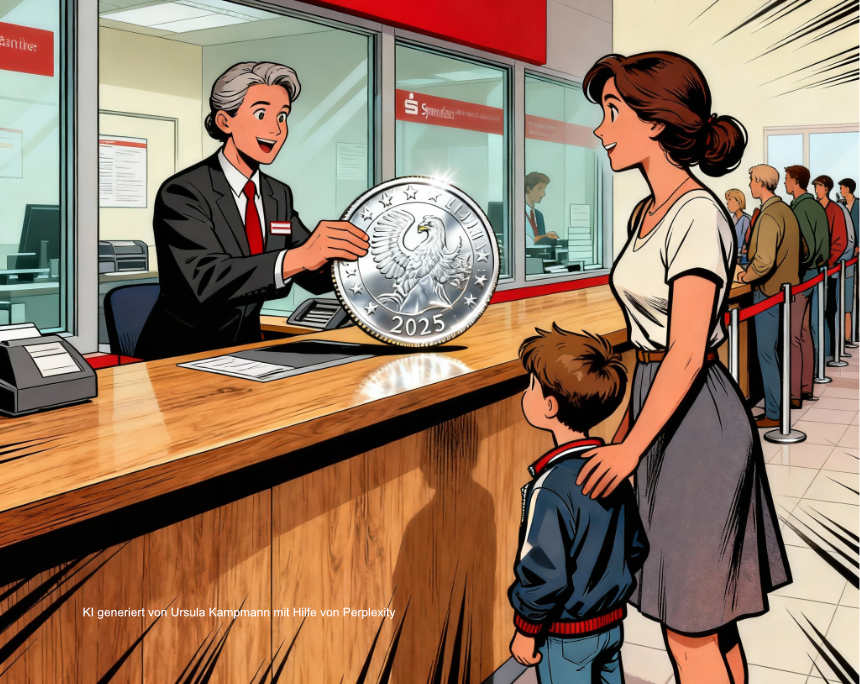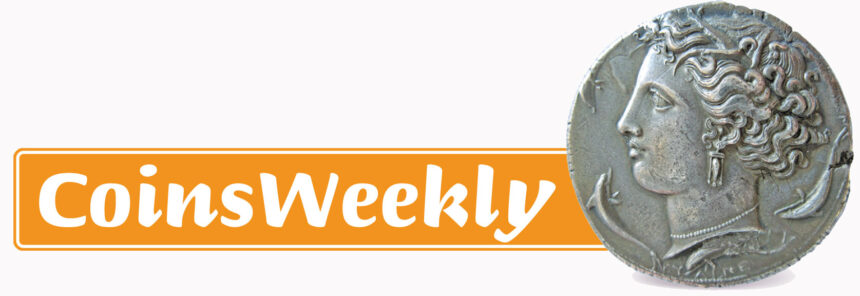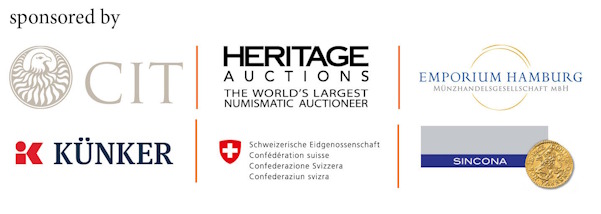Germany's commitment to coin collecting
On 10 September 2025, the German Mint announced that it would slightly adjust the face values of its collector coins. The face value of the 20 euro collector coins made of sterling silver (92.5% silver) will increase to 25 euros. The fine silver coin (99.9% silver) will now be worth 35 euros instead of 25 euros. The 20-euro coin commemorating ‘125 years of the Wuppertal suspension railway’ will retain its face value. The first coin to be sold with the new face value will be issued in March 2026 in honour of Elisabeth Schwarzhaupt.
What is the background to this measure?
While the price of silver was between USD 24 and USD 30 at the beginning of this year, by mid-September it had risen to USD 42-43 per ounce. Some analysts expect the price to rise even further. This also increases the material value of collector coins. There is a risk that their silver value will

exceed their face value. This is not a problem for countries such as France or Switzerland. There, all collector coins containing silver can only be purchased from the mint or through retailers at a premium. Germany has a different tradition with its collector coins at face value and is thus committed to coin collecting: there is no better way to encourage young people to take up collecting than to make the threshold for entry as low as possible. It is also thanks to this approach that Germany has developed into a nation of coin collectors.
On the other hand, these collector coins sold at face value threaten to cost the German treasury millions if the silver value exceeds the face value on the date of issue. To prevent this from happening, the face value of the coins mentioned above has been increased.
What alternatives were there?
Of course, the German Ministry of Finance could have reacted differently. We know from 2011 what options are available for issuing collector coins at face value without increasing the face value when silver prices rise. Back then, the price of silver also rose, and Switzerland, Austria and Germany faced exactly the same problem that Germany is facing today.
Switzerland made it simple: since 2011, Swiss collector coins have only been available at a premium, regardless of their minting quality. The result: in the long term, interest in coins in circulation quality declined, while sales of proof coins increased slightly. However, this increased demand did not compensate for the decline in demand for coins in circulation quality.
The German decision turned out to be a disaster. Collector coins sold at face value no longer contained silver, but looked exactly the same as before. These coins lay like lead in banks and savings banks. Due to the decline in demand, the decision was reversed in April 2015.
The Austrian Mint responded in the most creative way. It offered a very attractive and completely different version of the silver collector coins at face value in copper. In addition, it adjusted the issue dates and themes: the copper collector coins at face value were issued in time for the major holidays, when children and young people in Austria can look forward to receiving gifts of money anyway. The Austrian Mint supported this with attractive packaging and a large distribution network. The result: an increase in the mintage of both coin variants and thus in sales.
What is the problem with increasing the face value?
But why did the three countries not simply decide to increase the face value in 2011, as Germany has now done? To understand this, one must be aware of the risk that such an increase can entail.
The problem of acceptance is quite obvious: how much money is a collector willing to invest in a collector coin?
But there was another risk in the past. Some readers may remember the Austrian commemorative coins worth 500 schillings. They also owed this nominal value to a silver crisis, namely ‘the’ silver crisis par excellence, caused by the Hunt brothers. On 1 January 1979, the material value of the 100 schilling commemorative coins, containing 15.36 g of silver, was still 3 dollars; on 18 January 1980, a commemorative coin worth 100 schillings contained silver worth 300 schillings. The Austrian Ministry of Finance decided to take decisive action and increased the nominal value to 500 schillings.
But before the first new commemorative coin appeared, the silver boom collapsed, and with it the demand for commemorative coins. This confronted the Austrian National Bank with the question of what would happen if all collectors suddenly put their commemorative coins back into circulation.
Please do not imagine that this would be unrealistic. When the US was shaken by the financial crisis in autumn 2008, the US Mint hardly needed to mint any more quarters. All the quarters from the 50 States Programme, which had previously been diligently collected, were now being spent.’
What was not a big problem with 25 cents in 2008 would have been different with 500 schillings in 1979. At that time, commemorative coins with a nominal value of 18 billion were sitting in the nation’s savings accounts. That corresponded to 15% (sic!) of all cash. If these coins had suddenly been on the market, they could have accelerated inflation.
Austria was lucky. The Austrians kept their commemorative coins. And so the Austrian National Bank had time. It used this time to buy the Austrian Mint, including its minting privilege, from the Austrian state. We don’t need to look in detail at what further measures it took, but the minting policy of the Austrian Mint in the late 1980s and 1990s was shaped by these experiences.
Why is the situation different today than it was in 1979?
Today, the German Ministry of Finance no longer needs to fear this problem. This is because the 20 euro commemorative coins are only a fraction of all the commemorative coins issued by the German Mint. The various gold coins are far more significant in terms of their value. In addition, the amount of money in circulation in Germany is much greater, and cash plays a smaller role than it did in 1979.
What does it mean that German collector coins are still available at face value?
One thing is important for anyone who loves numismatics, namely that the Treasury is making the effort to issue collector coins at face value in order to encourage the next generation of collectors.
Ultimately, therefore, the Treasury’s decision to increase the face value of some collector coins is a commitment to coin collecting that every collector should welcome.
Text and images: Ursula Kampmann

